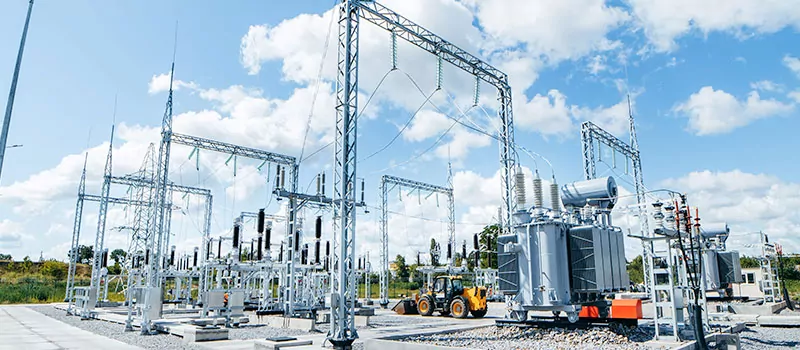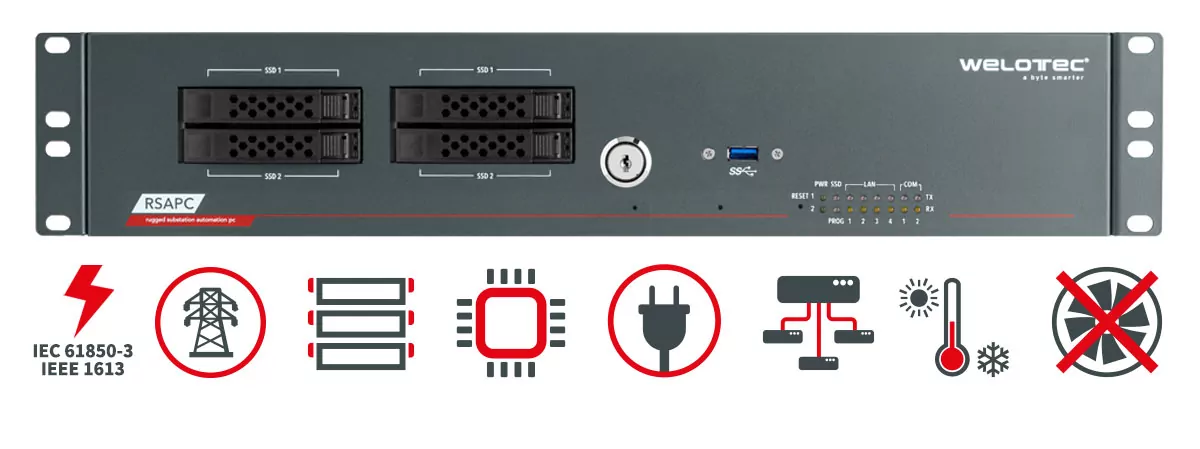Computerization of substations for reliable and efficient power supply in times of energy transition
Why are substations being digitized?
The energy transition has a profound impact on the energy infrastructure and presents it with new challenges. Without the expansion of power lines and transformers as well as the introduction of digitalization technologies, a successful energy transition is not possible, as the existing infrastructure is not able to handle the increased capacity and flexibility. The increasing integration of renewable energies requires increased transmission capacity and better control and regulation of the power grid. Without these adjustments, bottlenecks will occur and a reliable supply of renewable energy can no longer be guaranteed. There is a risk of overloads and grid instabilities, which reduces the efficiency of the system and, in the worst case, leads to power outages. The implementation of digitalization technologies enables efficient monitoring, control and integration of renewable energie sources to ensure a stable and reliable power supply as part of the energy transition.
IEC 61850 standard: fundamentals and significance for the energy industry
A key specification for the digitization of substations is the IEC 61850 standard, which defines communication protocols and data models that enable the seamless integration of various devices and systems. This standard forms the basis for interoperable and standardized communication in substations. The uniform communication interface ensures efficient data transmission. Furthermore, IEC 61850 enables improved substation automation, optimized fault detection and correction, and easy integration of new components and systems.
The digital transformation: evolution from digitization to computerization
Digitization alone is a first step towards more efficient and reliable substations. But to exploit the full potential of digitization, further development toward computerization is needed. This is where powerful servers play a crucial role. By running various applications such as remote terminal units (RTUs), substation gateways, human machine interface (HMI), supervisory control and data acquisition (SCADA) systems, and engineering workstations on a central server, the integration of hardware components from different manufacturers is simplified. This allows for more flexible scalability and simplified substation management and monitoring of substations.
However, this development goes even further. In the field of IT and OT security, applications such as firewalls, intrusion detection systems (IDS) and other security mechanisms are increasingly being developed and tested as software solutions. This will further strengthen the protection of critical infrastructure, which includes substations. In addition, there is an emerging trend towards Centralized Protection & Control, where substation control and monitoring is centralized. This development requires specialized solutions that enable efficient and secure management of substations.
The essential requirements for servers – performance, reliability and scalability
The requirements for servers in substations are particularly high. In addition to IEC 61850-3 and IEEE 1613 certifications, they must be resistant to electromagnetic interference (EMC), shock, vibration and extreme temperatures. This ensures reliable operation even under demanding environmental conditions. When a server is IEC 61850-3 certified like our Substation Automation Computers, it means it is at least as reliable as the conventional Intelligent electronic Device (IEC).
In addition, a redundant power supply for a server is of great importance to avoid failures. Servers must be able to handle both 110 V DC battery voltage and 220 V DC substation voltage.
Advantages of computerization of existing and new substations
Computerization of substations offers a variety of advantages. Standardization of hardware simplifies maintenance and reduces the costs.
Due to the reduced use of disparate equipment, factory acceptance testing (FAT) is also simplified by reducing the number of components that need to be tested. This allows for faster commissioning and increased efficiency in maintenance and troubleshooting.
In addition, computerization minimizes dependence on a single hardware supplier. The use of open standards facilitates interoperability between solutions from different vendors. This promotes competition and enables network operators to chose the best solutions for their specific requirements.
The advantages of computerization are an important step towards a reliable and efficient power supply in the era of the energy transition. By employing modern technologies, network operators can successfully overcome the challenges of the energy transition and shape a sustainable energy future.
From computerization to virtualization: An evolution of digital transformation
The virtualization of applications in substations offers additional advantages and represents the next step in this evolution. By consolidating applications on a central server, resource utilization is optimized. The scalability of virtualization allows capacity to be flexibly adapted to the requirements of the power grid.
To learn more, read our white paper on virtualization.



